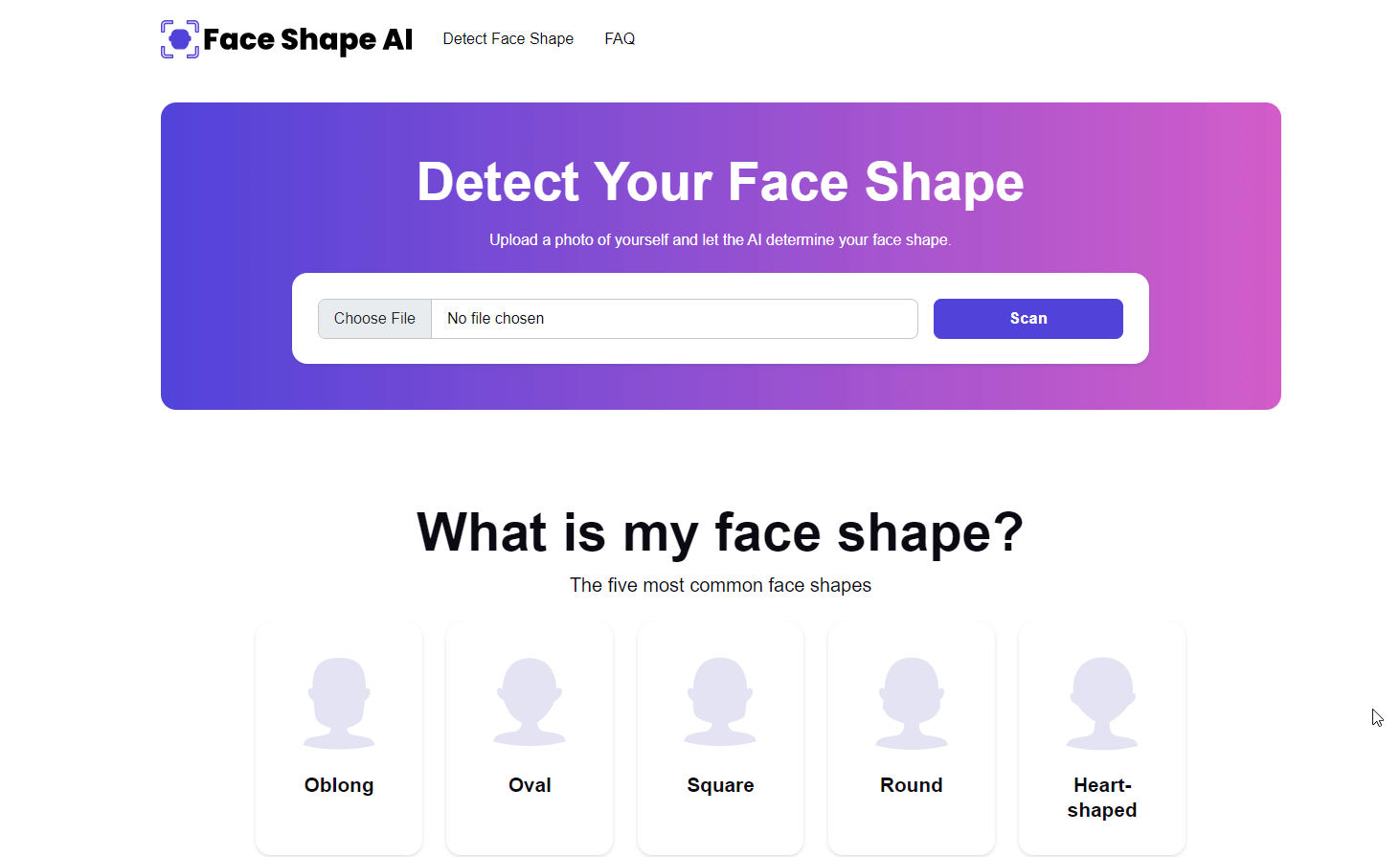Have you ever wondered how your smartphone magically unlocks with just a quick glance, or how social media platforms automatically tag your friends in photos? The secret lies in the innovative technology known as face shape detector.
The Genesis of Face Shape Detection
The concept of face shape detection traces its roots back to the pioneering work of computer scientists and researchers who sought to develop algorithms capable of recognizing and analyzing human faces.
Through the use of artificial intelligence, machine learning, and computer vision techniques, these visionaries were able to create sophisticated systems that could identify faces with remarkable accuracy.
One of the key breakthroughs in face shape detection came with the development of deep learning algorithms, particularly convolutional neural networks (CNNs), which enabled computers to process and analyze complex visual data, such as facial features, with unprecedented precision.
This laid the foundation for the widespread adoption of face shape detection in various industries and applications.
How Face Shape Detection Works
At the heart of face shape detection is the process of extracting facial features and analyzing the geometry of a person’s face to determine their unique face shape.
This involves capturing an image or video of a person’s face, detecting key landmarks such as the eyes, nose, and mouth, and then using sophisticated algorithms to classify the face shape based on predefined criteria.
Facial recognition systems employ a variety of techniques to accurately identify face shapes, including geometric analysis, texture mapping, and statistical modeling.
By comparing the extracted facial features with a database of known face shapes, these systems can quickly and accurately match a person’s face to their identity.
Applications of Face Shape Detection
The applications of face shape detection are as diverse as they are innovative, spanning across industries such as security, healthcare, retail, and entertainment.
Let’s explore some of the exciting ways in which this technology is being leveraged:
- Biometric Security: Face shape detection is widely used in biometric security systems to authenticate individuals and grant access to secure facilities or devices. From unlocking smartphones to securing sensitive data, facial recognition technology plays a crucial role in enhancing security measures.
- Personalized Beauty Solutions: In the realm of beauty and cosmetics, face shape detection is revolutionizing the way consumers receive personalized beauty recommendations. By analyzing facial features and contours, beauty apps can suggest tailored skincare routines, makeup looks, and hairstyle options that complement an individual’s unique face shape.
- Virtual Try-On Platforms: Online retailers and fashion brands are harnessing the power of face shape detection to offer virtual try-on experiences, allowing customers to visualize how different eyeglass frames, hats, or jewelry pieces would look on their face before making a purchase. This interactive feature enhances the shopping experience and helps boost customer confidence in their buying decisions.
- Healthcare Diagnostics: Medical professionals are exploring the potential of face shape detection in diagnosing genetic disorders and developmental abnormalities that manifest through distinctive facial features. By analyzing facial symmetry, proportions, and anomalies, doctors can make more accurate assessments and provide targeted interventions for patients.
The Ethical Considerations of Face Shape Detection
While the capabilities of face shape detection are undeniably impressive, the technology also raises important ethical considerations regarding privacy, consent, and bias.
Concerns have been raised about the misuse of facial recognition data, the potential for surveillance and tracking, and the risk of algorithmic bias leading to discriminatory outcomes.
As we navigate the evolving landscape of facial recognition technology, it is essential to prioritize transparency, accountability, and responsible use of these powerful tools.
Establishing clear guidelines, regulations, and ethical frameworks can help mitigate the risks associated with face shape detection and ensure that it is deployed in a fair and equitable manner.
The Future of Face Shape Detection
Looking ahead, the future of face shape detection holds immense promise for further innovation and advancement.
As researchers continue to refine algorithms, expand datasets, and integrate new technologies such as 3D scanning and augmented reality, we can expect to see even more sophisticated applications of facial recognition in various domains.
From enhancing user experiences in virtual reality environments to enabling personalized healthcare interventions based on facial biometrics, the possibilities for face shape detection are boundless.
As we embrace the transformative potential of this technology, it is crucial to remain vigilant about the ethical implications and societal impacts of its widespread adoption.
Conclusion
Face shape detector represents a remarkable fusion of art and science, enabling us to unlock new realms of creativity, convenience, and connectivity.
As we delve deeper into the intricacies of facial recognition technology, we gain a deeper appreciation for the ingenuity and ingenuity behind this groundbreaking innovation.
Whether it’s simplifying everyday tasks, revolutionizing industries, or pushing the boundaries of human-computer interaction, face shape detection has the power to reshape our world in profound ways.
By embracing this technology with curiosity, caution, and conscientiousness, we can harness its transformative potential for the greater good of society.
So, the next time you unlock your smartphone with a glance or try on virtual sunglasses online, remember the magic of face shape detection working behind the scenes, weaving a tapestry of technology and imagination that continues to captivate and inspire us all.














